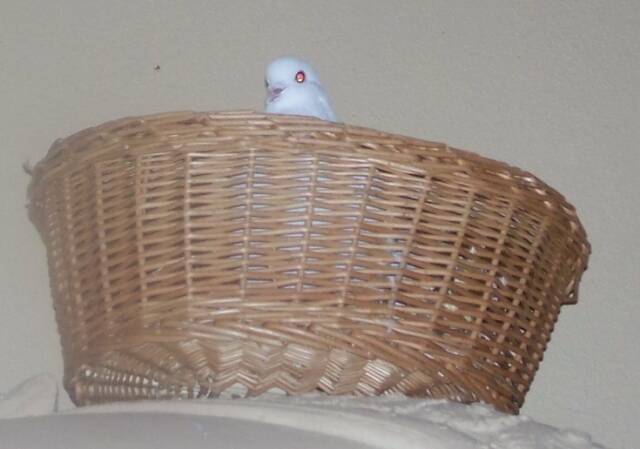Hindu Temple
Feb. 9, 2009
The Hindu Temple of Florida, located in Tampa, is one of the most beautiful locations in this area. Nestled in a neighborhood behind TIA, it bursts forth from hiddent depths, a piece of ancient India born in suburban America.
I often take my classes to the site. The Temple has hosted these trips for years, much to my gratitude. However, something unique happened on my last trip, Feb. 9, 2009. As Dr. Sastry and I sat in the Temple resting between field trip tours, a loud rattling sounded from the glass doors by the Shiva lingam. In years of visitations to the Temple, this had never happened before. As part of my studies include the supernatural world, I was curious as to what might be happening. I walked to the doors and found nothing there. Then Dr. Sastry suggested that the visitor might be a pigeon. Now this was interesting.
It seems that a pigeon had taken up its home at the Temple. It made some sense as the statue of Dancing Shiva outside the glass doors had a basket perched outside of it. I had wondered about that but dismissed it as unimportant at the time. Now I wanted to learn more.
My tour guide explained that Shiva was often associated with pigeons and that many Shiva temples in south India had pigeons that stayed with them. I was even more interested. Why? The original answer I recieved was that Shiva had become a pigeon at one point in his existence. I remembered that this particular god had four other incarnations, one of which was a bird, but I did not remember a piegon in specific. I decided to look this up when time allowed.
Later that night, with the second class tour the pigeon made his appearance. This bird is a large one, and appears to be pure white from what I could see. It strutted it about the ramparts of the front of the temple for a while before settling into its basket for the night. The entire class walked around the outside, stopping in front of the statue of Dancing Shiva. I took multiple pictures of the bird -- it was unphased. It did not fly away or become upset.
That night I also learned that the pigeon was fascinated with the workship of the Shiva. It witnessed the ceremonies of the god. It happened that night was the night to worship Shiva. I observed the bird who did seem attentive to the ceremony. It was quite amazing.
I asked my students to do some additional research on the bird. It seems that there is a myth directly associated with Shiva and the pigeon. Paravati, the wife of Shiva, asked him to tell her the secrets of creation. Shiva eventually agreed to do this. He took Paravati into a cave and built a fire. He spread a deer skin for the two of them to sit upon and then he told her the secret of creation. However, what he didn't (?) realize is that his deer skin had covered a pigeon egg. The next day, the egg hatched into twin birds who, having been present at the discussion, gained immortality.
So, I am going to observe the pigeon as often as possible. My next field trip is in March and I am hoping that the bird is still there. Even better, I would love that the second bird eventually shows as well.
It is an interesting observation, to say the least!
Resources:
Chardham Yatra. Retrieved February 10, 2009, from Chardham Yatra Web site: http://www.chardhamyatra.com/amarnath-yatra.htm.
Dowson, John (2003). Classical Dictionary of Hindu Mythology and Religion, Geography, History and Literature. Kessinger Publishing, Retrieved February 10, 2009, from http://books.google.com/books.
Also note: Shiva takes the form of the avatar Sharbhesha, which is a bird/man/lion combination. He does this to rebuke Vishnu who is so proud of his lion/man incarnation that he starts to get a bit of an ego!


Update: July 28, 2009:
The white pigeon is dead. He was found on Temple grounds, bloodied. However, there may be a new twist on this as a large eagle had taken up residence in the tower on Temple grounds. The eagle is said to be a rare one, and may be a bald eagle. The unique aspect of this is that Vishnu's vehicle is an eagle! There is some speculation that the eagle may have killed the pigeon, but that is unknown.
I have not seen the eagle myself but did witness a large nest in the tower at my last visit.